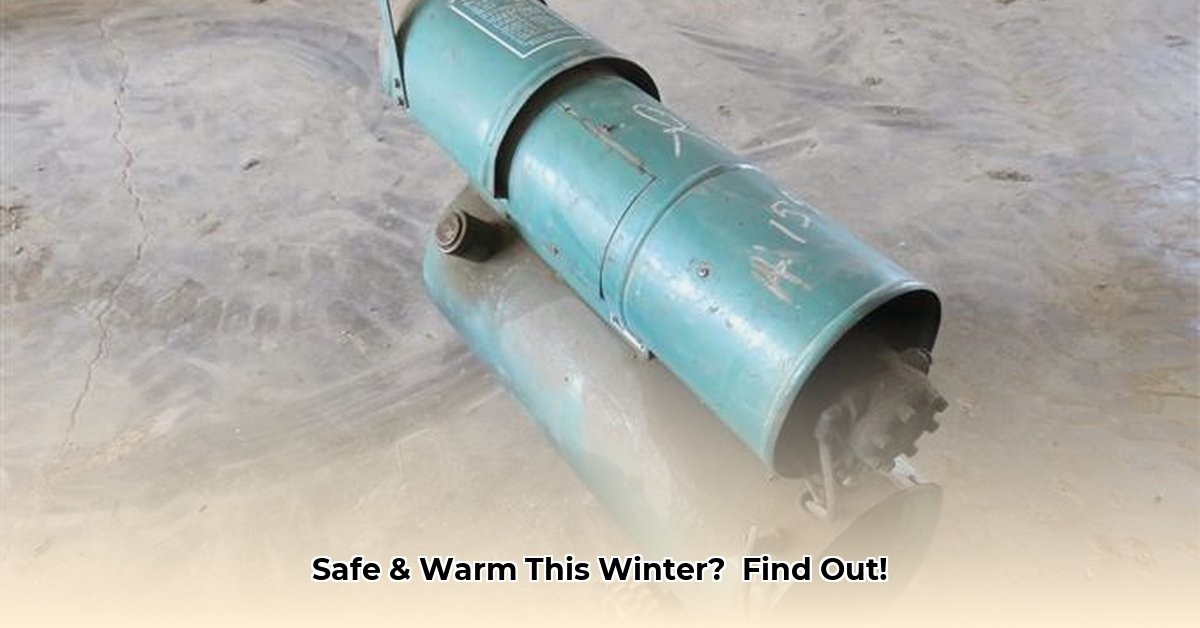
Staying warm during power outages or in off-grid locations can be a challenge. Kerosene heaters offer a reliable solution, but safety and informed decision-making are crucial. This guide explores Tractor Supply's kerosene heater options, focusing on safety, types, costs, and maintenance. We'll help you choose the right heater and use it responsibly. For more information on Tractor Supply heaters, check out this helpful resource.
Safety First: Prioritizing Safe Operation
Kerosene heaters, while effective, pose risks. Carbon monoxide (CO) poisoning, a silent killer, is a major concern. CO is an odorless, colorless gas produced by incomplete combustion. Therefore, proper ventilation is paramount. Many Tractor Supply heaters include safety features like automatic shutoff and tip-over protection, but these are not foolproof.
Essential Safety Steps:
- Install and regularly test a working carbon monoxide detector: This is non-negotiable. Place it near the heater.
- Ensure adequate ventilation: Always open windows slightly or use a fan to ensure fresh air circulation and exhaust expulsion. Never seal a room with a running kerosene heater.
- Maintain a safe distance: Keep the heater away from flammable materials (curtains, furniture, etc.). Allow ample space around it.
- Perform regular maintenance: Consult your owner's manual for cleaning instructions. A clean heater operates more efficiently and safely, reducing the risk of fire or CO buildup.
- Store fuel properly: Keep kerosene in a cool, dry place, away from ignition sources.
Understanding Kerosene Heater Types at Tractor Supply
Tractor Supply offers various kerosene heaters categorized primarily by heating method:
- Forced-air heaters: These distribute warm air throughout a room, providing faster and more even heating. They're suitable for larger spaces.
- Radiant heaters: These emit heat directly, warming smaller areas more efficiently. They’re often more energy-efficient for smaller spaces.
Another key factor is the BTU (British Thermal Unit) rating. Higher BTUs indicate greater heating capacity, necessary for larger areas. A small bedroom needs significantly fewer BTUs than a large workshop. Match the BTU to your space's size for optimal heating. Don't overestimate or underestimate your heating needs.
Environmental Considerations: A Balanced Perspective
Kerosene heaters produce emissions, impacting the environment. However, in contexts with limited electricity access or heavily fossil-fuel-dependent power grids, transporting electricity might have a larger carbon footprint than using a kerosene heater sparingly. More research is needed for a comprehensive comparison across diverse situations and electricity generation methods. This complex issue requires a nuanced understanding of regional energy production and consumption patterns. The environmental impact is context-dependent.
Cost Analysis: A Holistic View of Expenses
The total cost of kerosene heating extends beyond initial purchase. Consider:
- Fuel costs: Kerosene prices are volatile; budget appropriately and consider the anticipated usage frequency.
- Maintenance: Regular cleaning and occasional repairs are inevitable. Preventative maintenance extends heater lifespan and reduces long-term costs. Do you need to budget for wick replacements?
Comparing kerosene's long-term cost to other heating solutions (electric, propane, etc.) requires considering local energy prices and the frequency of heater use.
Buying Guide: Selecting the Right Kerosene Heater
Choosing the right heater requires careful consideration:
- Space size: The area's square footage dictates the necessary BTU rating.
- Safety features: Prioritize automatic shutoff and tip-over protection for enhanced safety.
- Portability: Determine if you need a portable unit or a stationary one for a designated area.
- Budget: Allocate resources for the purchase, fuel, maintenance, and potential repairs.
Maintenance and Troubleshooting: Ensuring Safe and Efficient Operation
Regular maintenance is crucial for safety and efficiency.
Maintenance Checklist:
- Clean regularly: Follow manufacturer instructions for cleaning the burner and ensuring proper airflow. This typically involves removing dust and debris that can hinder performance and increase risks.
- Store fuel safely: Keep kerosene in a cool, dry, well-ventilated area, far from ignition sources.
- Troubleshooting: Consult the owner's manual for troubleshooting common issues. If problems persist, seek professional assistance.
Conclusion: Responsible Kerosene Heater Use
Kerosene heaters provide warmth in challenging circumstances, but safe and responsible use is paramount. Prioritize safety by following all guidelines, using a CO detector, and performing regular maintenance. Carefully consider the factors outlined – safety, cost, environmental impact, and heater type – to choose the best option for your needs.